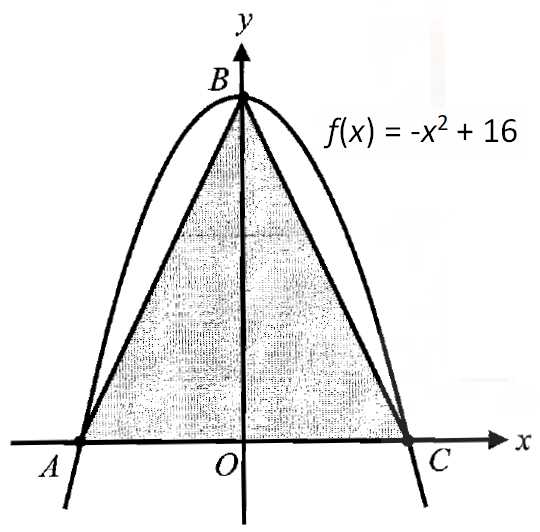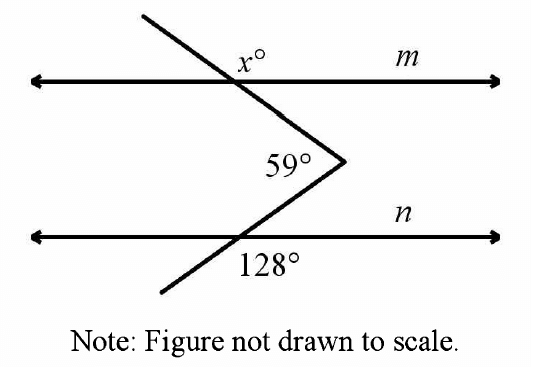WORD PROBLEMS ON SIMPLE EQUATIONS
Problem 1 :
18 is taken away from 8 times of a number is 30. Find the number.
Solution :
Let x be the number.
Given : 18 is taken away from 8 times of the number is 30
Then, we have
8x - 18 = 30
Add 18 to both sides.
8x = 48
Divide both sides by 8.
x = 6
The number is 6.
Problem 2 :
If the average of three consecutive odd numbers is 13, find the numbers.
Solution :
Let x be the first odd number.
Then, the other two cinsecutive odd numbers are
(x + 2) and (x + 4)
Given : The average of three consecutive odd numbers is 13.
(sum of the three consecutive odd numbers)/3 = 13
⁽ˣ ⁺ ˣ ⁺ ² ⁺ ˣ ⁺ ⁴⁾⁄₃ =13
⁽³ˣ ⁺ ⁶⁾⁄₃ = 13
³⁽ˣ ⁺ ²⁾⁄₃ = 13
x + 2 = 13
Subtract 2 from both sides.
x = 11
x + 2 = 11 + 2 = 13
x + 4 = 11 + 4 = 15
The three consecutive odd numbers are 11, 13 and 15.
Problem 3 :
The denominator of a fraction exceeds the numerator by 5. If 3 be added to both, the fraction becomes ¾. Find the fraction.
Solution :
Let x be the numerator.
Given : The denominator of the fraction exceeds the numerator by 5.
From the above information,
fraction = ˣ⁄₍ₓ ₊ ₅₎ ----(1)
Given : If 3 be added to both, the fraction becomes 3/4.
From the above information, we have
⁽ˣ ⁺ ³⁾⁄₍ₓ ₊ ₅ ₊ ₃₎ = ¾
Simplify.
⁽ˣ ⁺ ³⁾⁄₍ₓ ₊ ₈₎ = ¾
Solve for x.
4(x + 3) = 3(x + 8)
4x + 12 = 3x + 24
x = 12
Substitute x = 12 in (1).
fraction = ¹²⁄₍₁₂ ₊ ₅₎
= ¹²⁄₁₇
Problem 4 :
If thrice of A's age 6 years ago be subtracted from twice his present age, the result would be equal to his present age. Find A's present age.
Solution :
Let x be A's present age.
A's age 6 years ago = x - 6.
Thrice of A's age 6 years ago = 3(x - 6).
Twice his present age = 2x.
Given : Thrice of A's age 6 years ago be subtracted from twice his present age, the result would be equal to his present age.
2x - 3(x - 6) = x
2x - 3x + 18 = x
- x + 18 = x
18 = 2x
Divide both sides by 2.
9 = x
A's present age is 9 years.
Problem 5 :
A number consists of two digits. The digit in tens place is twice the digit in ones place. If 18 be subtracted from the number, the digits are reversed. Find the number.
Solution :
Let x be the digit in units place.
Then, the digit in the tens place = 2x.
So, the number is (2x)x.
Given : If 18 be subtracted from the number, the digits are reversed.
(2x)x - 18 = x(2x)
(2x)x - 18 = x(2x)
10(2x) + 1x - 18 = 10x + 1(2x)
Simplify.
20x + x - 18 = 10x + 2x
21x - 18 = 12x
21x - 18 = 12x
9x = 18
Divide both sides by 9.
x = 2
The digit at the units place is 2.
Then, the digit at the tens place is
= 2 ⋅ 2
= 4
The required number is 42.
Problem 6 :
For a certain commodity, the demand equation giving demand 'd' in kg, for a price 'p' in dollars per kg. is 'd = 100(10 - p)'. The supply equation giving the supply 's' in kg. for a price 'p' in dollars per kg. is 's = 75(p - 3)'. Find the equilibrium price.
Solution :
The equilibrium price is the market price where the quantity of goods demanded is equal to the quantity of goods supplied.
d = s
100(10 - p) = 75(p - 3)
1000 - 100p = 75p - 225
1225 = 175p
Divide both sides by 175.
7 = p
The equilibrium price is $7.
Problem 7 :
The fourth part of a number exceeds the sixth part by 4. Find the number.
Solution :
Let x be the required number.
Fourth part of the number = ˣ⁄₄
Sixth part of the number = ˣ⁄₆
Given : The fourth part of a number exceeds the sixth part by 4.
ˣ⁄₄ - ˣ⁄6 = 4
Least common multiple of the denominators (4, 6) = 12.
Multiply both sides of the equation by the least common multiple 12 to get rid of the denominators 4 and 6.
12(ˣ⁄₄ - ˣ⁄6) = 12(4)
12(ˣ⁄₄) - 12(ˣ⁄6) = 12(4)
3x - 2x = 48
x = 48
The required number is 48.
Problem 8 :
The width of the rectangle is ⅔ of its length. If the perimeter of the rectangle is 80 cm. Find its area.
Solution :
Let x be the length of the rectangle.
Then, width of the rectangle is ²ˣ⁄₃.
Given : Perimeter is 80 cm.
Perimeter = 80 cm
2(l + w) = 80
Divide both sides by 2.
l + w = 40
Substitute l = x and w = ²ˣ⁄₃.
x + ²ˣ⁄₃ = 40
³ˣ⁄₃ + ²ˣ⁄₃ = 40
⁽³ˣ ⁺ ²ˣ⁾⁄₃ = 40
⁵ˣ⁄₃ = 40
Multiply both sides by ⅗.
x = 24
The length is 24 cm.
Then, the width is
= ²ˣ⁄₃
= ²⁽²⁴⁾⁄₃
= 16 cm
Formula to find the area of a rectangle is
= l ⋅ w
Substitute l = 24 and w = 16.
= 24 ⋅ 16
= 384 cm2
Problem 9 :
In a triangle, the second angle is 5° more than the first angle. And the third angle is three times of the first angle. Find the three angles of the triangle.
Solution :
Let x° be the first angle.
Then, we have
the second angle = x° + 5°
third angle = 3x°
We know that the sum of three angle in any triangle is 180°.
x° + (x° + 5°) + (3x°) = 180°
x + x + 5 + 3x = 180
5x + 5 = 180
Subtract 5 from both sides.
5x = 175
Divide both sides by 5.
x = 35
The first angle is 35°.
The second angle is
= 35° + 5°
= 40°
The third angle is
= 3 ⋅ 35°
= 105°
The three angles of the triangle are 35°, 40° and 105°.
Problem 10 :
The price of a product this year is $28.75. If the price of the product this year is 15% more than the price last year, what was the price of the product last year?
Solution :
Let x be the price of the product last year.
It is given that the price this year is 15% more than the price last year.
(100 + 15)% of x = 28.75
115% of x = 28.75
1.15x = 28.75
Divide both sides by 1.15.
x = 25
The price of the product last year was $25.
Kindly mail your feedback to v4formath@gmail.com
We always appreciate your feedback.
©All rights reserved. onlinemath4all.com
Recent Articles
-
Digital SAT Math Problems and Solutions (Part - 143)
Apr 13, 25 12:01 PM
Digital SAT Math Problems and Solutions (Part - 143) -
Quadratic Equation Problems with Solutions
Apr 12, 25 08:21 PM
Quadratic Equation Problems with Solutions -
Digital SAT Math Problems and Solutions (Part - 142)
Apr 11, 25 06:26 PM
Digital SAT Math Problems and Solutions (Part - 142)

